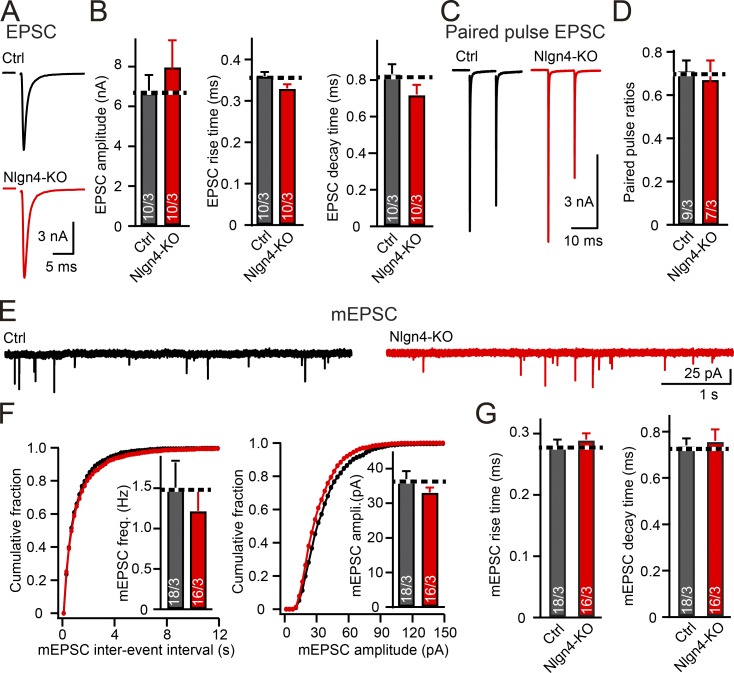Figure 4.
Neuroligin-4 KO does not affect excitatory synaptic transmission at the calyx of Held. (A and B) Evoked excitatory synaptic responses are unchanged by the neuroligin-4 KO (A, representative traces; B, summary graphs of the EPSC amplitude, rise times, and decay times). Recordings were made from patched MNTB principal neurons in response to extracellular fiber stimulation in acute slices from P12–P14 control (Nlgn123fl/fl; Nlgn4+/+, gray) and neuroligin-4 KO (Nlgn123fl/fl; Nlgn4−/−, red) mice. (C and D) Paired-pulse ratios of excitatory responses are unchanged by the neuroligin-4 KO (C, representative traces; D, summary graph for paired-pulse ratios at 10-ms interstimulus intervals. (E–G) Spontaneous miniature release is unchanged by the neuroligin-4 KO (E, representative traces; F, cumulative probability plots of the mEPSC interevent interval [left] or amplitude [right], with insets depicting summary graphs of the mEPSC frequency [left] or amplitude [right]; G, summary graphs of the mEPSC rise and decay times). Recordings were from P12–P14 MNTB neurons from control (black) and neuroligin-4 KO (red) littermate mice. Data are means ± SEM. Numbers in bars represent the number of cells per mice analyzed. Statistical significance was assessed by Student’s t test.

